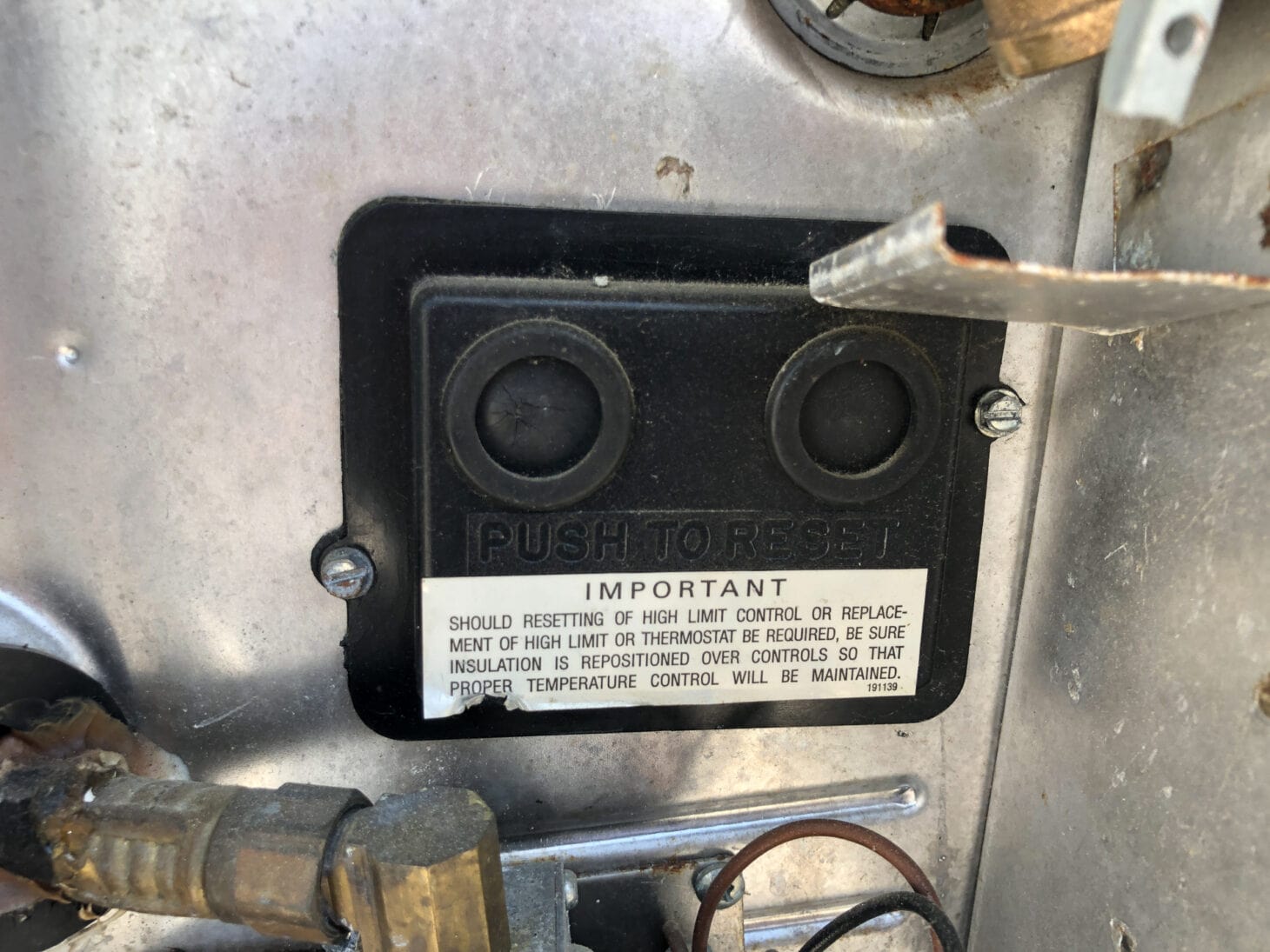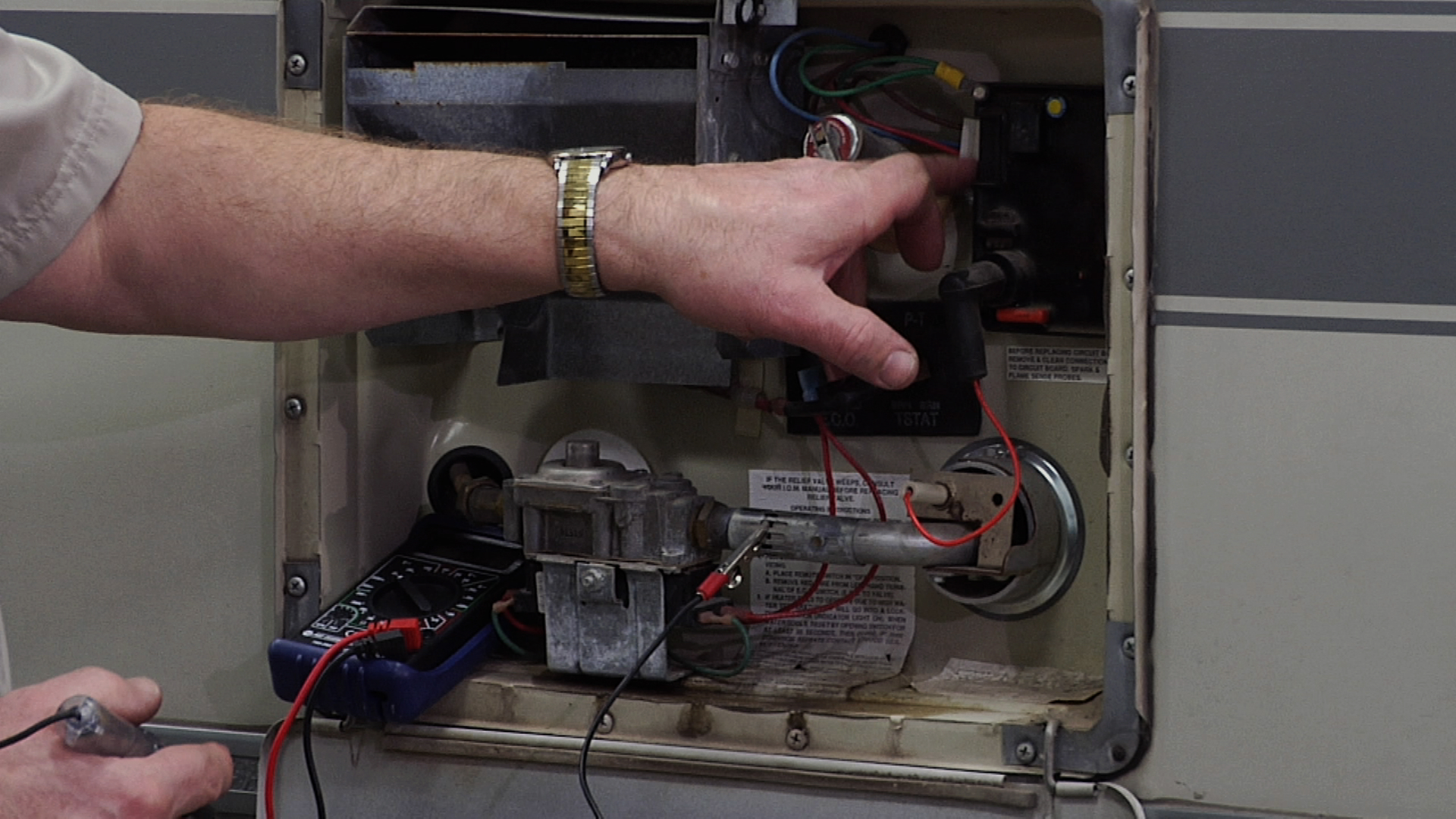Is your Atwood water heater acting up? You’re not alone.
Many people face issues with their water heaters, leaving them frustrated and longing for that soothing hot shower. Imagine waking up on a chilly morning, only to find that your water heater isn’t working. It’s enough to ruin anyone’s day.
But don’t worry, you’re in the right place to find solutions. We’ll dive into common problems that might be causing your Atwood water heater to malfunction. Whether it’s a minor hiccup or something more serious, understanding the issue is the first step to getting back that warm comfort you deserve. We’ll also walk you through practical steps to troubleshoot and fix these issues, so you can regain control and enjoy uninterrupted hot water. Stick around—by the end of this read, you’ll have the knowledge and confidence to tackle your water heater woes head-on.
Page Contents
Common Issues
When your Atwood water heater stops working, it can be frustrating. Understanding common issues helps in troubleshooting and possibly fixing the problem yourself. This section explores typical challenges that might cause your water heater to malfunction.
Pilot Light Problems
The pilot light is crucial for igniting the burner. If it’s out, the heater won’t work. Dirt and debris can block the pilot light opening. Keep it clean for proper function. Another issue could be a faulty thermocouple. This part ensures the pilot light stays lit. Replace it if damaged.
Thermostat Malfunctions
The thermostat regulates water temperature. If it fails, you get cold water. Check for loose connections or faulty wiring. They can disrupt thermostat function. Test the thermostat with a multimeter. Replace it if it shows no continuity.
Gas Supply Interruptions
A steady gas supply is essential for heating water. Check the gas valve for obstructions. Make sure it’s open. Inspect gas lines for leaks. Leaks interrupt the supply. Use soapy water to find bubbles indicating leaks. Call a professional if you detect a leak.
Basic Troubleshooting Steps
When your Atwood water heater stops working, the issue might be simple. Understanding basic troubleshooting steps is essential for every homeowner. These steps can save time and prevent frustration. Sometimes, the solution is right in front of you. Let’s explore a few common troubleshooting tips to get your heater running smoothly.
Checking Power Supply
The first step is to check the power supply. Ensure the heater is plugged in properly. Verify that the circuit breaker is not tripped. A faulty power supply can halt the heater’s operation. If needed, test the outlet with another device. This confirms the outlet is working.
Inspecting Connections
Inspect all connections for signs of wear or damage. Loose or corroded connections can disrupt power flow. Check the wiring and connectors for any visible issues. Ensure everything is securely attached. Proper connections are crucial for the heater’s performance.
Resetting The Heater
Sometimes, a simple reset can solve the problem. Locate the reset button on the heater. Press and hold it for a few seconds. This can clear any minor errors in the system. Resetting often restores normal function.
Fixing Pilot Light Issues
Is your Atwood water heater leaving you in the cold? A common issue could be a faulty pilot light. Fixing pilot light problems can be straightforward if you know where to start. Let’s dive into some practical solutions that can have your water heater back up and running.
Relighting The Pilot
Relighting the pilot light is often the first step. Always ensure safety by turning off the gas supply before starting. Once you’ve done that, follow the manufacturer’s instructions to relight the pilot. Usually, this involves holding down the pilot button and using a lighter to ignite the flame.
Have you checked if the pilot light stays lit? If it doesn’t, there might be an issue with the gas flow. Double-check the gas valve and make sure it’s open. An open gas valve allows the pilot light to burn steadily.
Cleaning The Burner
Dirt and debris can accumulate in the burner over time, disrupting the pilot light. A simple cleaning can do wonders. Use a small brush or compressed air to clear out any build-up.
Consider this: a clean burner ensures an even distribution of heat. This means your pilot light will function better. Regular cleaning could save you from more significant issues down the road.
Replacing The Thermocouple
If your pilot light keeps going out, the thermocouple might be faulty. This component senses the pilot flame and keeps the gas valve open. Without it working correctly, your pilot light won’t stay lit.
Replacing the thermocouple is not as daunting as it sounds. You can find replacements at most hardware stores. Ensure you follow the specific instructions for your model. A new thermocouple can make all the difference.
Have you experienced these issues before? If yes, what worked for you? If not, these tips can be your guide to warmth again.

Credit: roadtrippers.com
Addressing Thermostat Problems
Addressing thermostat problems in your Atwood water heater can save you from unexpected cold showers. A faulty thermostat often disrupts the heating process, leaving you with tepid water. Understanding how to adjust, test, and replace the thermostat can make a big difference.
Adjusting Temperature Settings
Begin by checking your water heater’s temperature settings. Sometimes, the solution is as simple as a slight adjustment. Locate the thermostat dial, often found behind a small panel on the heater. Turn it incrementally, allowing the water to heat for a few hours. Is the water warm enough now? If not, further investigation is needed.
Testing Thermostat Functionality
Testing the thermostat’s functionality is crucial to diagnose the issue. Turn off the power supply to avoid any electrical hazards. Use a multimeter to check for continuity. If the multimeter shows no continuity, the thermostat is likely defective. This simple test can confirm if a replacement is necessary.
Replacing A Faulty Thermostat
If testing reveals a faulty thermostat, it’s time for a replacement. Ensure you purchase a thermostat compatible with your specific Atwood model. Follow the manufacturer’s instructions closely for a smooth replacement process. Once installed, test the heater again. The satisfaction of hot water can be quite rewarding, don’t you think?
Tackling these thermostat issues can restore the comfort of hot water in your home. Have you faced similar issues before? Taking proactive steps today can prevent bigger headaches tomorrow.
Resolving Gas Supply Issues
Experiencing problems with your Atwood water heater? Gas supply issues often cause these devices to malfunction. Ensure the gas valve is open and connections are secure to restore hot water quickly.
Resolving gas supply issues can be key to fixing an Atwood water heater. Gas problems often lead to inefficient heating. Understanding these issues can help restore your heater’s functionality. This guide will walk you through essential steps.Checking Gas Valve
The gas valve controls the flow of gas to the heater. Ensure it is open. Sometimes, debris can block the valve. Clean it carefully. If it’s damaged, consider a replacement.Inspecting Gas Line
A gas line connects the heater to the gas supply. Check for visible leaks. Listen for hissing sounds. These indicate a leak. Tighten loose connections. Replace damaged sections to prevent gas loss.Ensuring Adequate Gas Pressure
Low gas pressure affects heater performance. Use a pressure gauge to measure it. Confirm the pressure matches the heater’s requirements. Adjust the regulator if needed. Seek professional help for complex issues.Preventive Maintenance Tips
Preventive maintenance can keep your Atwood water heater running smoothly. Regular care avoids unexpected breakdowns and extends its lifespan. Discover simple tips to ensure your heater operates efficiently. Follow these easy steps to maintain your Atwood water heater.
Regular Cleaning
Dust and grime can affect your heater’s performance. Clean it monthly to prevent buildup. Wipe the exterior with a damp cloth. Ensure vents are clear of debris. This keeps the heater functioning optimally. Regular cleaning prevents overheating and improves energy efficiency.
Annual Inspections
Schedule yearly inspections with a professional. They check for wear and tear. Experts can identify potential issues early. Replace worn-out parts promptly. Annual inspections improve safety and reliability. Professional checks ensure the heater operates at peak performance.
Proper Storage Techniques
Store your heater carefully during off-seasons. Drain it completely to prevent rust. Keep it in a dry, cool place. Cover it to protect from dust. Proper storage prolongs its lifespan. Avoid storing it in damp areas. Follow storage guidelines for optimal performance.
When To Seek Professional Help
When your Atwood water heater stops working, it can disrupt your daily routine. While some issues may be simple enough to fix on your own, there are times when professional help is necessary. Knowing when to call in an expert can save you time, money, and frustration.
Identifying Complex Problems
If you’re facing problems like inconsistent water temperature or strange noises, it could be a sign of a more complex issue. These might involve electrical components or require specialized tools to diagnose. Attempting these repairs without proper knowledge can worsen the situation.
Think about your comfort level with handling electrical systems. If you’re unsure, it’s better to seek professional help. A technician can swiftly pinpoint the problem and offer a reliable solution.
Understanding Warranty Coverage
Your Atwood water heater might still be under warranty. Before you attempt any repairs, check your warranty details. Unauthorized fixes can void your warranty, leaving you with hefty repair bills.
Contacting a licensed technician ensures that your repairs are covered under warranty. They’ll have the expertise to work within warranty guidelines, protecting your investment.
Finding A Reliable Technician
Choosing the right technician is crucial. Look for someone with experience in Atwood water heaters and positive reviews from past clients. A reliable technician can diagnose and fix problems efficiently.
Ask for recommendations from friends or family. You can also check online platforms for reviews and ratings. Finding the right professional can make the repair process smooth and stress-free.
Is it worth risking further damage by trying a DIY fix? Consider your options carefully. Sometimes, professional help is the best way forward to ensure your water heater is up and running efficiently.

Credit: www.rvrepairclub.com

Credit: www.youtube.com
Frequently Asked Questions
Why Is My Atwood Water Heater Not Heating?
Your Atwood water heater might not be heating due to a faulty thermostat, a tripped circuit breaker, or sediment buildup. Check the power supply and thermostat settings. Regular maintenance can prevent sediment accumulation. If the problem persists, consider consulting a professional technician for a thorough inspection.
How Do I Reset My Atwood Water Heater?
To reset your Atwood water heater, locate the reset button, often found near the thermostat. Press it firmly until you hear a click. This will restart the system, potentially resolving minor issues. If the heater still doesn’t work, further troubleshooting or professional assistance may be required.
What Causes Atwood Water Heater Leaks?
Leaks in Atwood water heaters can result from loose connections, damaged valves, or a corroded tank. Inspect connections and valves for tightness. Corrosion may indicate a need for tank replacement. Regular maintenance helps identify issues early, preventing costly damage and ensuring optimal performance.
Can Sediment Affect Atwood Water Heater Efficiency?
Yes, sediment buildup can reduce your Atwood water heater’s efficiency. Sediment acts as an insulator, preventing heat transfer to water. Regular flushing of the tank helps remove sediment, improving efficiency and prolonging heater lifespan. If sediment persists, consult a technician for professional cleaning.
Conclusion
Fixing an Atwood water heater can seem daunting. But it’s manageable. Start with simple checks. Ensure power and water connections are secure. Listen for unusual sounds. Look for error codes if available. Regular maintenance prevents many issues. Clean and inspect parts routinely.
Consult your manual for guidance. Professionals can help if problems persist. Remember, safety first. Turn off power before repairs. With patience, you’ll restore your water heater. Enjoy warm showers again soon. Stay proactive to avoid future troubles. Keep your water heater running smoothly.
Your home’s comfort depends on it.
